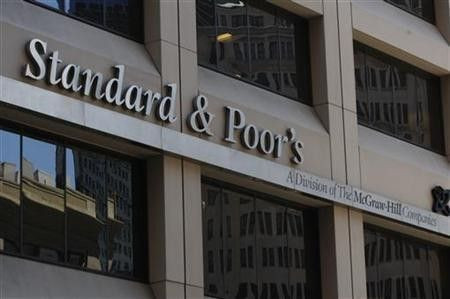S&P's U.S. Debt Downgrade: Impact on Treasury Yield

Standard & Poor's lowered it long-term debt rating for the U.S. to AA+, while Moody’s and Fitch maintained their ratings. S&P's has affirmed the U.S. A-1+ short-term rating.
Moody’s affirmed the Aaa/P1 rating on Aug. 2 and transitioned the status from "ratings under review" to "outlook negative". Fitch hasn't conducted a formal review, but has limited itself to a statement noting that the debt ceiling was approved, and "commensurate with its 'AAA' rating, the risk of sovereign default remains extremely low".
"In the next week or two, we expect the Treasury yield curve to steepen and long-term yields to rise by as much as 25 basis points. The U.S. dollar probably will weaken against the safe-haven Swiss franc and Japanese yen but rise against the euro, pound, Nordic and commodity currencies," said Larry Hatheway, economist at UBS Securities.
Risk premium are likely to remain high, and Hatheway recommends adding to high-quality corporate credits on days when they widen rather than chasing rallies. The financial services industry appears to have prepared well by boosting liquidity. Gold should benefit from strong flows.
Hatheway said S&P's downgrade of the U.S.'s long-term debt rating clearly will be front and center for the next few days. He believes that most investors thought a downgrade was fairly likely, and we therefore expect a relatively muted response in the markets.
Treasury yields may tick up a bit, but that is not surprising after such a strong rally and also in a week that features 10-year and 30-year auctions.
UBS Securities strategist Michael Schumacher believes the downgrade will deter marginal buyers, and Treasury is slated to auction 10- and 30-year debt this week. the U.S. long-term rates began rising midway through the trading session on Friday in response to whispers about a potential downgrade.
Schumacher believes that yields in the 7- to 30-year area of the Treasury curve could rise as much as 20 to 25 basis points in the next few days, putting the 10-year yield at 2.75 percent to 2.80 percent.
The front end of the U.S. curve probably will remain well bid, particularly if several major central banks intervene in the foreign exchange market. These institutions would need to deploy their incremental positions in U.S. dollar, and the 3- to 5-year area of the Treasury curve is a likely destination.
German bunds probably will outperform Treasuries over the next few days. Schumacher believes the U.S. MBS will perform reasonably well, but thinks that agency debentures could suffer.
"However, we believe that investors’ focus probably will return quickly to issues such as weakening economies across G10 and troubles in the Eurozone," said Hatheway.
© Copyright IBTimes 2024. All rights reserved.



















